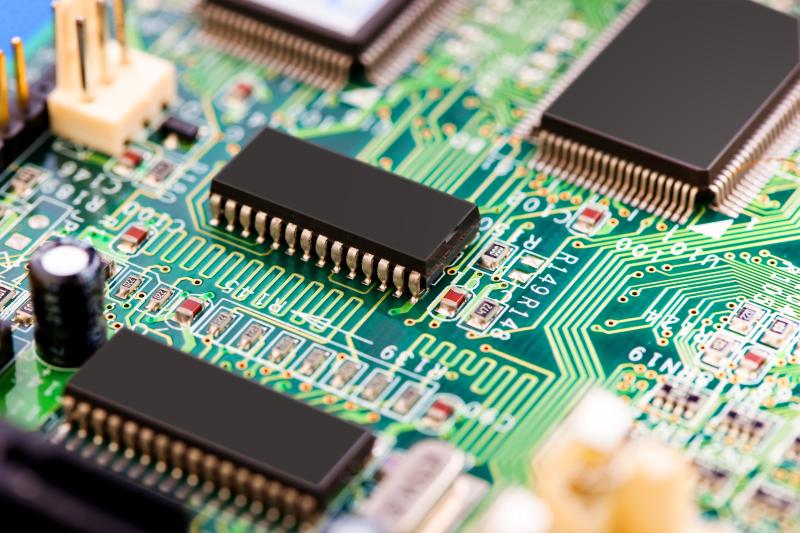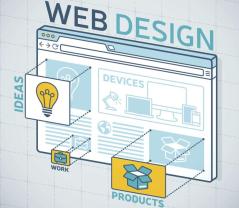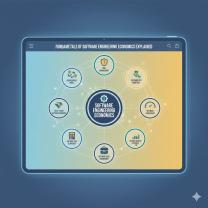What is IC (integrated circuit)?
An Integrated Circuit (IC), often referred to as a microchip or chip, is a compact arrangement of transistors, resistors, capacitors, and other electronic components that are fabricated on a single semiconductor wafer or chip. The integration of multiple components onto a single chip allows for the creation of complex electronic circuits that perform a wide range of functions.
Key features and components of integrated circuits include:
Semiconductor Material:
- Integrated circuits are typically fabricated on a semiconductor material, commonly silicon. The semiconductor material serves as the foundation for the various electronic components and interconnections within the chip.
Transistors:
- Transistors are fundamental electronic components that can amplify or switch electronic signals. Integrated circuits can incorporate a large number of transistors, allowing for the creation of complex logic circuits, amplifiers, and other functions.
Resistors and Capacitors:
- Resistors control the flow of electrical current, while capacitors store and release electrical energy. Both resistors and capacitors can be integrated into the chip to perform specific functions within the circuit.
Interconnections:
- Interconnections on the chip provide pathways for electrical signals to travel between different components. Metal layers or conductive traces connect the transistors, resistors, and capacitors, forming a complete electronic circuit.
Logic Gates:
- Integrated circuits often contain logic gates, which are electronic circuits that perform logical operations (AND, OR, NOT). By combining multiple transistors, logic gates can be created to implement complex logic functions.
Memory Cells:
- Integrated circuits are used extensively in memory devices, such as RAM (Random Access Memory) and ROM (Read-Only Memory). Memory cells within the chip store and retrieve digital data.
Microprocessors and Microcontrollers:
- Microprocessors and microcontrollers are specialized types of integrated circuits designed to process and control digital information in electronic devices. Microprocessors are often the central processing units (CPUs) in computers, while microcontrollers are used in embedded systems.
Analog and Digital ICs:
- Integrated circuits can be classified as analog or digital based on their functionality. Analog ICs process continuous signals, while digital ICs manipulate discrete binary signals (0s and 1s). Digital ICs are further categorized into various types, including microcontrollers, microprocessors, and programmable logic devices.
Application-Specific ICs (ASICs):
- ASICs are integrated circuits designed for a specific application or task. They are customized to perform a particular function, providing efficiency and performance tailored to the application's requirements.
System-on-Chip (SoC):
- A System-on-Chip is a type of integrated circuit that integrates multiple components, including processors, memory, and peripherals, onto a single chip. SoCs are commonly used in devices such as smartphones, tablets, and IoT (Internet of Things) devices.
Fabrication Processes:
- Integrated circuits are manufactured using sophisticated fabrication processes, such as photolithography, where layers of materials are deposited, patterned, and etched on the semiconductor wafer to create the desired components and interconnections.
The invention of the integrated circuit is credited to Jack Kilby and Robert Noyce, who independently developed the concept in the late 1950s and early 1960s. Integrated circuits have since become a foundational technology in the field of electronics, enabling the miniaturization and integration of electronic components, leading to the development of powerful and compact electronic devices. They are a key enabler for the advancement of modern computing, communication, and electronic systems.
Understanding Integrated Circuits (ICs) in Electronics:
Imagine a tiny city crammed with millions of miniature buildings. That's essentially what an integrated circuit (IC), also known as a chip or microchip, is! In electronics, ICs are miniaturized circuits built on a thin silicon wafer, containing various electronic components like transistors, capacitors, and resistors all seamlessly connected. These components work together to perform specific electronic functions, revolutionizing how we use technology.
Here's a closer look at the elements of an IC:
- Components: Transistors act as miniature switches, while capacitors store electrical charge and resistors control current flow. These components are connected through conductive pathways etched on the silicon wafer.
- Circuitry: These connections define the pathways for electricity to flow within the chip, creating logical gates and circuits that perform specific functions like amplification, calculations, or signal processing.
- Functionality: Depending on the design, an IC can execute various tasks, ranging from simple memory storage to complex calculations and communications.
Evolution and Impact of Integrated Circuits in Technology:
The invention of the transistor in 1947 laid the groundwork for ICs. Jack Kilby's development of the first monolithic IC in 1958 marked a turning point, allowing multiple transistors to be integrated onto a single chip. Since then, ICs have undergone several revolutions:
- Miniaturization: Moore's Law, predicting the exponential increase in transistor density on a chip, has driven incredible miniaturization, leading to more powerful and compact devices.
- Increased complexity: From rudimentary functions to multi-core processors with billions of transistors, ICs have grown vastly in complexity and capabilities.
- Application diversification: Once limited to specialized devices, ICs now permeate almost every aspect of our lives, from computers and smartphones to medical equipment and automobiles.
Practical Applications of Integrated Circuits in Various Industries:
ICs are the fundamental building blocks of modern technology, with applications across countless industries:
- Computing: Processors, memory chips, graphics cards, and other computer components rely heavily on ICs for complex calculations and data processing.
- Communications: Smartphones, network routers, and communication satellites utilize ICs for signal transmission, data management, and wireless connection.
- Entertainment: Televisions, video game consoles, and audio equipment employ ICs for image and sound processing, creating immersive entertainment experiences.
- Transportation: Automobiles utilize ICs for engine management, anti-lock braking systems, and collision avoidance technology.
- Healthcare: Medical imaging devices, pacemakers, and other life-saving equipment rely on ICs for accurate monitoring and treatment of patients.
- Renewable energy: Solar panels, wind turbines, and smart grids utilize ICs for efficient energy generation and distribution.
The vast array of applications showcases the transformative power of ICs. They have not only transformed how we live and work but also continue to push the boundaries of technology, driving innovation and shaping the future of various industries.
Remember, this is just a brief overview. If you have any specific questions about ICs, their components, or applications in different industries, feel free to ask! I'm always happy to explore this fascinating topic further.












